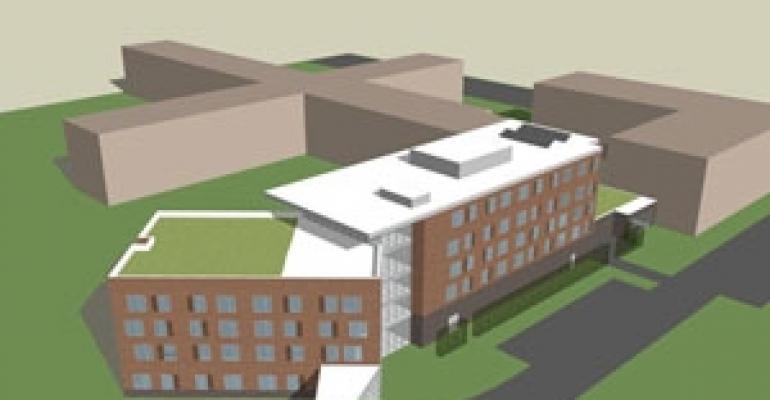In one of the last instances of government-subsidized seniors housing construction projects, the nonprofit Elderly Housing Development and Operations Corp. has broken ground on the $12 million J. Michael Fitzgerald Apartments in Lincolnwood, Ill., just north of Chicago.
The four-story building will contain 63 one-bedroom, one-bath apartments designed for independent seniors living. The property is part of a campus of four senior housing properties built and managed by Ft. Lauderdale, Fla.-based EHDOC, in a redevelopment of the former Municipal Tuberculosis Sanitarium on Pulaski Road in the north section of Chicago. The units are set to be finished by February 2014.
EHDOC Executive Director Steve Protulis says he thinks President Obama isn’t doing nearly enough to counter an enormous demand for affordable seniors housing. “According to the AARP, every time you build an affordable unit, there are 10 seniors ready for the waiting list for that unit,” Protulis says. “In a country where almost 11,000 people turning 65 years old every day, you have to pay attention to what is happening to those that are living in poverty.”

The Fitzgerald was one of the last construction projects to receive Section 202 funding from the U.S. Department of Housing and Urban Development. The Obama administration, handling massive budget cuts to HUD last year and this year, drastically cut Section 202 construction in the 2011 budget, and eliminated it completely for this year’s spending.
The HUD proposed Section 2013 budget includes $475 million for Section 202, including subsidies for rental contract renewals for seniors, but again does not include any funding for construction. Brian Sullivan, a public affairs officer for HUD, says he could not comment on the cuts.
Seniors housing, along with all rental housing, is enjoying a boom market. Affordable properties, however, typically face stigma and derision from residents who would rather have market-rate properties—of which there’s also more-than-adequate demand. Still today there are many city and village councils that reject proposals for affordable seniors housing as not fitting into desired master plans.
The sponsors of affordable development, the 202 recipients, have generally been church-based groups, with the HUD funding covering most of the construction costs. More than a decade ago, a Congressional commission recommended that the federal government assist in the investment in seniors housing, linked with services, as a means to save public funding in health and long-term care, according to Larry McNickle, a former director of housing policy for the American Association of Homes and Services for the Aging. He said the 202 funding in 2005 provided $650 million for 4,682 new units, but that amount has dropped steadily each year.
“What we’ve done in America is fostered this illusion that seniors are okay, that they’re all moving to Florida or Arizona and enjoying golf outings and Bingo,” Protulis says. “The truth is that the deterioration of living conditions is a dirty, silent secret. I’ve been out to where some of our residents have come from, the conditions can be terrible. We try to have a subsidized, safe and secure place where seniors can lie, but many are not that fortunate.”

